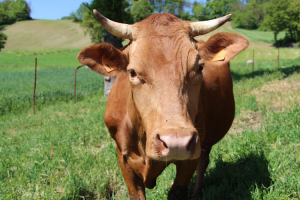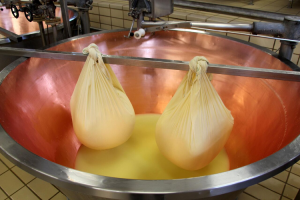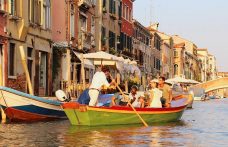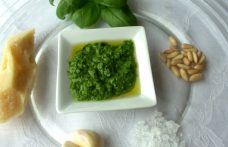
The rediscovery of Red Cow Parmigiano Reggiano
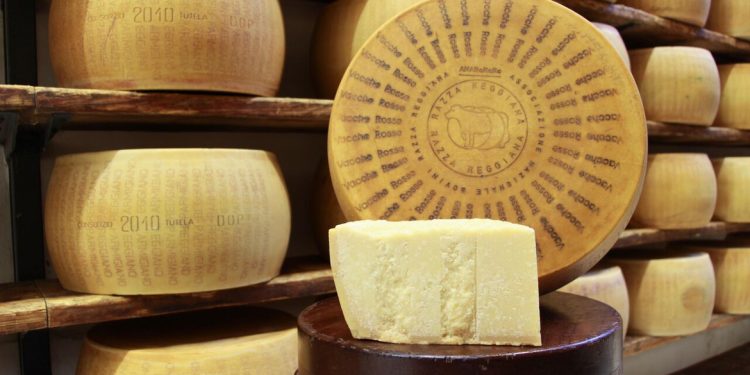
Why is Red Cow Parmigiano Reggiano so special? It appears that Parmigiano Reggiano got its name from the Reggiana breed of cattle, which the red cattle belong to. This breed produces less quantity, but good quality, milk: 18-20 litres a day, compared to the 30 or more litres of the Friesian cow, and it was precisely because it produced very little that it risked disappearing. In 1986 there were 600 head of cattle, compared to 250 thousand in 1950. Today, with about 3 thousand livestock, Red Cow Parmesan is the great Italian niche cheese: in 2015, 15 thousand wheels of cheese were produced, making up less than 5 percent of the 3 million 300 thousand wheels of Parmigiano Reggiano produced. But it boasts unique features, from the rind to the maturing.
Spot the difference in look and taste
As well as having the name Parmigiano Reggiano (which is what it basically is) stamped along the edge of the wheel, the Red Cow Parmesan stands out for the ray-shaped decoration also on the flat sides of the wheel. Here the wording “vacche rosse” (red cows) is repeated in rays around the central trademark, which portrays a cow or two cows pulling a cart. When comparing a Parmigiano Reggiano and a Parmigiano Reggiano Vacche Rosse, both 24 months old, the latter is lighter in colour, with more marked aromas, less sapid but not less flavoursome, more melt-in-the-mouth.
The ideal maturation is 36 months
Production of the cheese follows the same procedure as for Parmigiano Reggiano, which is stamped with the PDO mark after one year, if it conforms to the production regulations. The second stamping, the one with the red cows, is made after two years, the minimum time necessary before being released onto the market. Connoisseurs recommend the 36-month maturation. This is because the peculiarities of the milk require a slower maturation.
Why is Red Cow Parmigiano Reggiano easier to digest?
The animals are given a varied diet based on fresh grass, except in winter when they are mainly fed on hay, but never with cattle feed. This gets more than one portion of the stomach working, which contains large amounts of an element that is a precursor of fatty acids of the omega 3 family. Another peculiarity (linked to the breed), is having genetically a type of casein (the protein that transforms milk into cheese) suitable for a longer maturation of the product, which makes it easier to digest as the proteins evolve into more simple molecules. The last feature is the structure of the fat globules that allow the cheese to mature for longer without becoming dry.
Valorising an ancient breed
Almost all of the producers have space available to let the animals roam, the ones in the hills can let them graze in the meadows. The wellbeing of the animals is of the utmost importance to those who have chosen to raise this ancient breed of cattle, they don’t select head of cattle that produce more, but those with a better aptitude to breeding, such as the health of the udder, for example, for mechanical milking. As with every self-respecting PDO product, there is the Protection Consortium and, alongside it, the National Association of Reggiana cattle breeders, which all the producers belong to as it is the only association that certifies the product. There are some dairies that collect milk from various producers, although they don’t necessarily only make Parmesan with that milk, however, for the producers themselves it is often the opposite: they specialize (or they are in the process of becoming so) in the raising of this breed.
The addresses
Consorzio Vacche Rosse, via Fratelli Rosselli 41/2, Reggio Emilia, 0522.29.46.55
Azienda Agricola Grana d’Oro, via Neida 10, Cavriago (Reggio Emilia) 0522.37.07.82 – 338.75.35.393
Il Cantone, via Cantone 5, San Martino Guastalla (Reggio Emilia) 0522.82.57.78 – 340.3747015; 333.69.91.838
I sapori delle Vacche Rosse, via G.B. Vico 114 – ss 9, loc. Cella (Reggio Emilia) 0522.94.65.69 – 335.34.42.79

